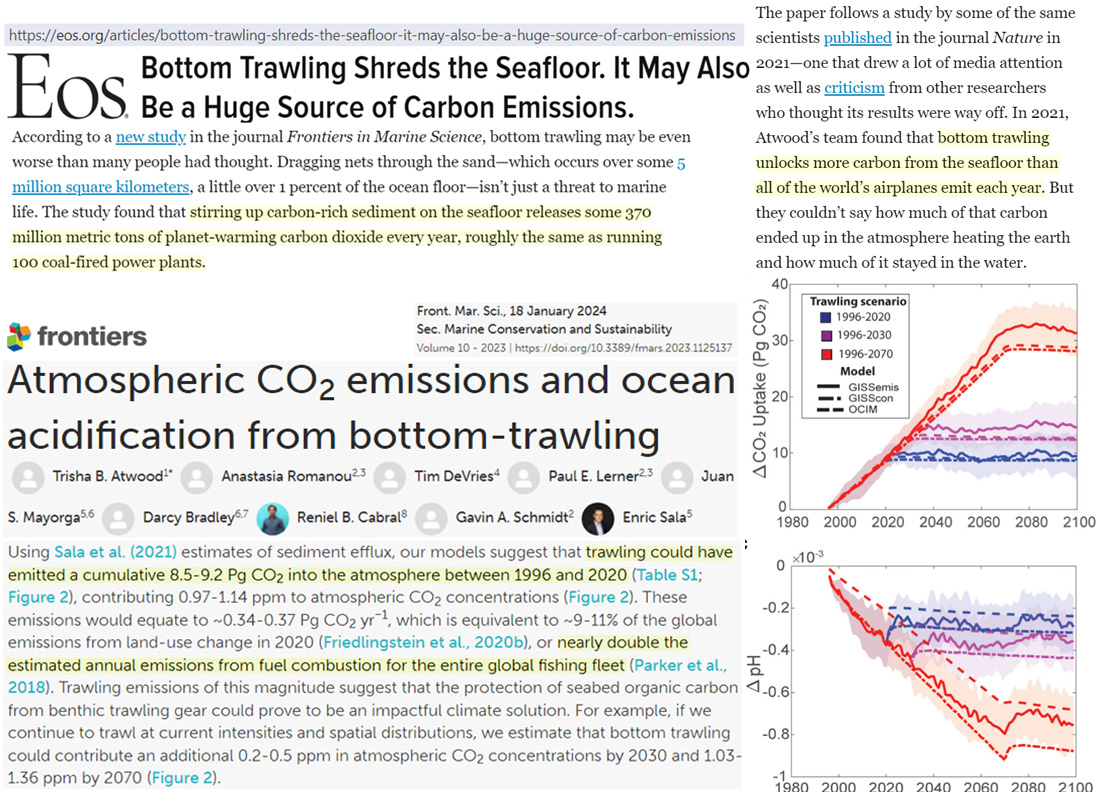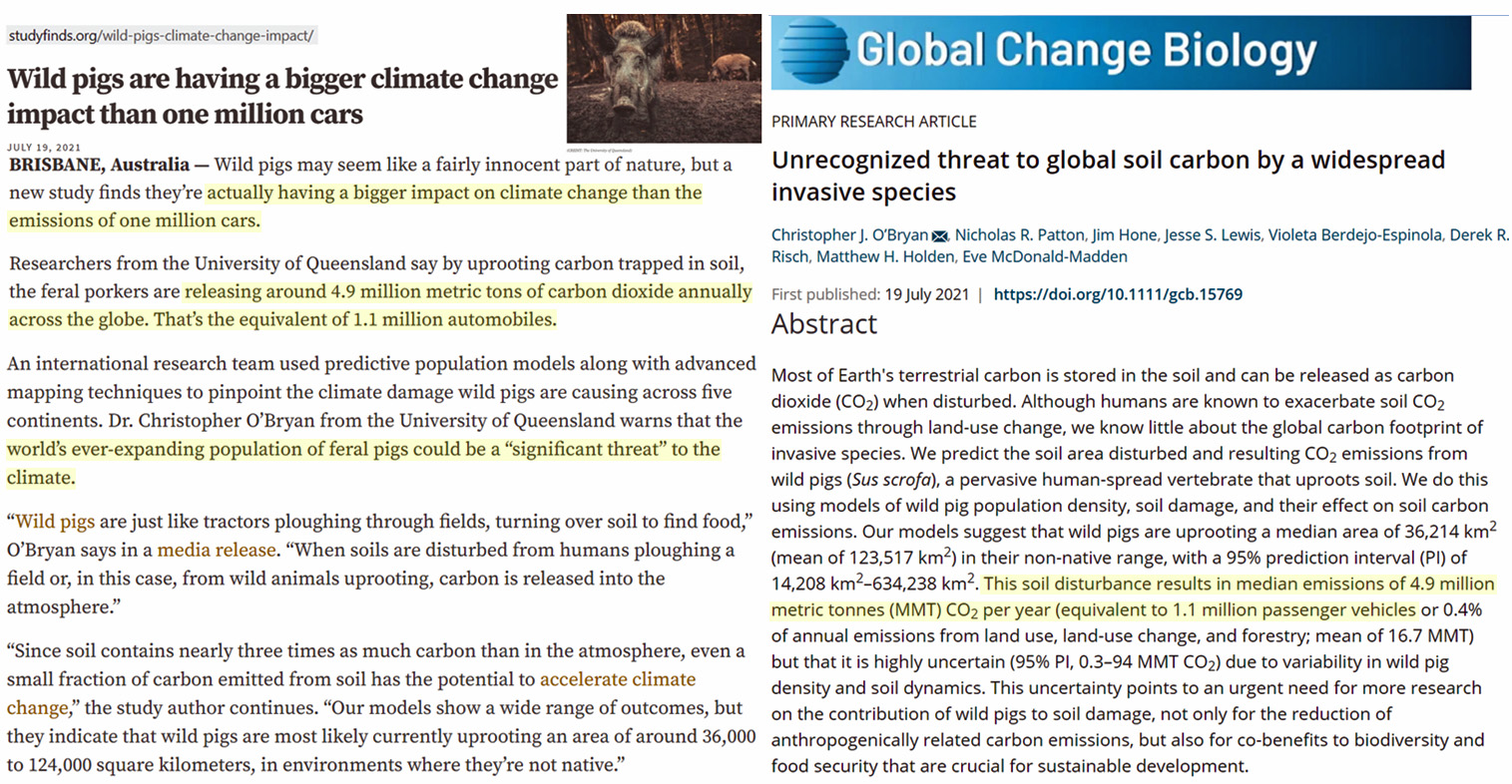Disturbing resting seafloor CO2 is yet another way humans are believed to be heating up the planet.
Only 1% of the seafloor has been molested by dragging nets through the sand (trawling) in an effort to retrieve the seafood staples we enjoy. But that’s enough to wreak havoc on the Earth’s climate at the top of the atmosphere, 100 km above the ocean surface, where CO2-induced global boiling is activated.
According to a new study and its press release, trawling the ocean floor for shrimp and cod disturbs the “planet-warming carbon dioxide” that had until then been peacefully reposed in sentiment. Dragging nets along the ocean floor “unlocks more carbon from the seafloor than all the world’s airplanes emit each year,” some 370 million metric tons worth.
And, of course, this acidifies the ocean too. When in its undisturbed state, the massive quantities of seafloor CO2 hadn’t been causing ocean acidification. But then as soon as the nets were dragged along the seafloor by humans, the disturbed CO2’s acidification potential was unleashed.

Image Source: Atwood et al., 2024 and EOS.org (press release)
In others news along this front, we are told (O’Bryan et al., 2021) that “wild pigs are having a bigger climate change impact than one million cars” because they are now, for the first time (ever?) trampling over dirt outside of their “native range.”
Had they stayed in their confined wild pig area, their “native range,” the CO2 they released from the soil as they trampled across it would not have had any climate impact. But the dirt these wild pigs are disturbing now has CO2 in its at-rest state in it, and thus “this soil disturbance results in median emissions of 4.9 million metric tonnes (MMT) CO2 per year (equivalent to 1.1 million passenger vehicles).”
Wild pigs are now classified as an “invasive species” delivering a previously unrecognized global carbon footprint “threat” by uprooting soil outside of their lane.






The climate clown show is going bonkers ! How can people be so stupid to believe those BS ?
They WANT to believe. A lot of people have a need to feel that they are doing good, saving the world / nature / themselves, so they latch onto an opportunity to do something, commit themselves to a cause, demonstrate that they care, all to make themselves feel better.
Because the want to believe it. Rational thinking appears to have left us…
“Acidification” of the ocean is a tell about the climate change bias of the author(s).
[…] From NoTricksZone […]
None of this makes sense. Are we to believe that CO2 molecules are sitting in the sand at the ocean bottom like a bunch of marbles, not interacting with the water or sand or sea life? Then trawling stirs them up and they become chemically active? Climate alarmists invent complete nonsense and try to pass it off as science.
No sense at all.
Here’s another one.
https://weather.com/science/environment/news/underwater-volcanoes-climate-change-global-warming
Thinks it’s the CO2 from undersea volcanoes that’s the problem. Couldn’t be the heat given off that warms the ocean, causing evaporation which then causes atmospheric warming through known mechanisms.
But then, maybe it is CO2, angry at being awakened from it’s slumber on the ocean floor. So beware angry CO2. If you see it, remain perfectly still, as it is “triggered” by motion. And remember, it can sense fear. 😆
[…] Using Nets On The Seafloor To Retrieve Seafood ‘Roughly The Same As Running 100 Coal-Fired Pla… […]